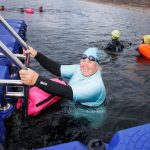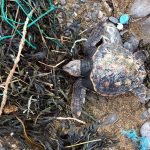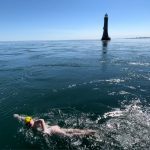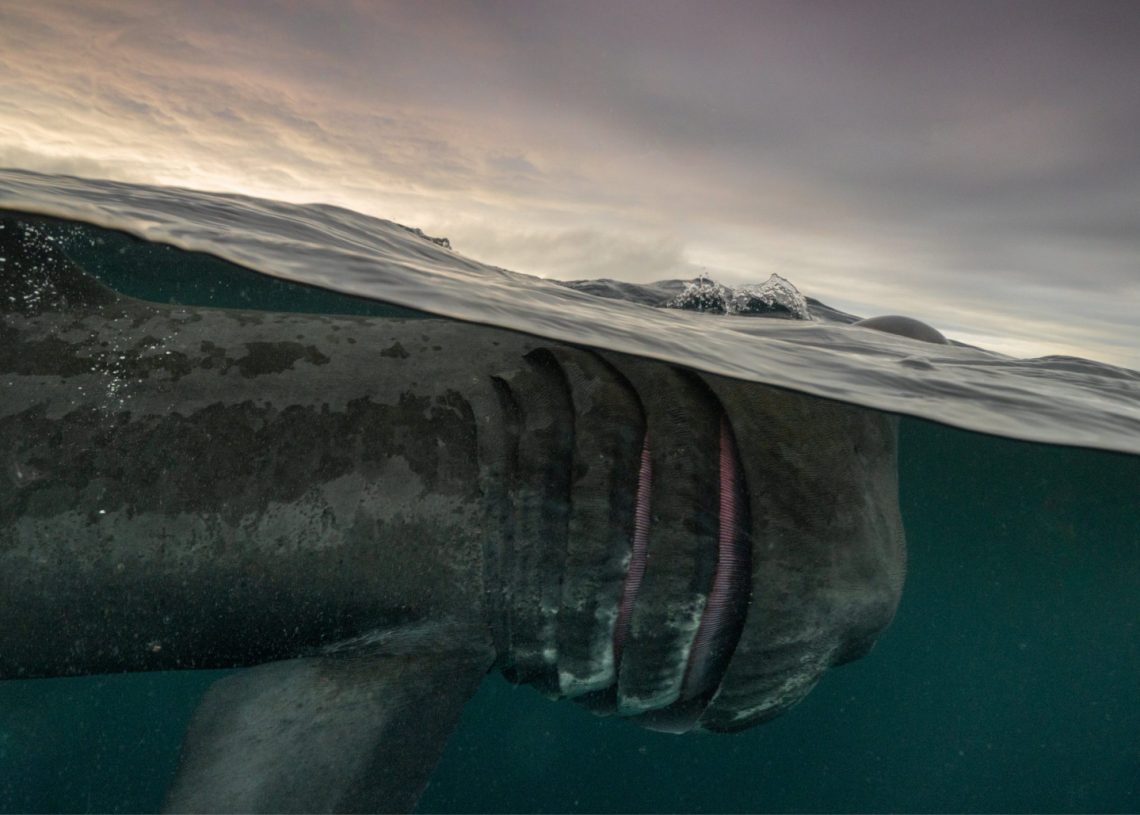
Marine Conservation Society shares incredible underwater photos on World Wildlife Day
To mark World Wildlife Day 2023, the Marine Conservation Society has shared remarkable ocean photography celebrating marine life around the UK.
It’s World Wildlife Day and the Marine Conservation Society (MCS) – the UK’s leading ocean charity – is celebrating by sharing incredible underwater photography from the UK seas.
The Marine Conservation Society fights for cleaner, better-protected, healthier seas, campaigning for improved laws to protect the ocean and shining a light on its wild and wonderful inhabitants. While the images below reveal the colourful and curious world under the surface of the UK’s seas, the MCS is keen to highlight how these fragile ecosystems are in urgent need of protection and restoration. Without a healthy ocean, we cannot have a healthy planet.
Compass jellyfish, Falmouth, Cornwall by Martin Stevens
“The jellyfish is a compass jellyfish, smaller individual from Falmouth, Cornwall in springtime. A nice encounter with a great species, locally. Taken under overcast skies, moody weather, one of the first compass jellyfish of the year.”
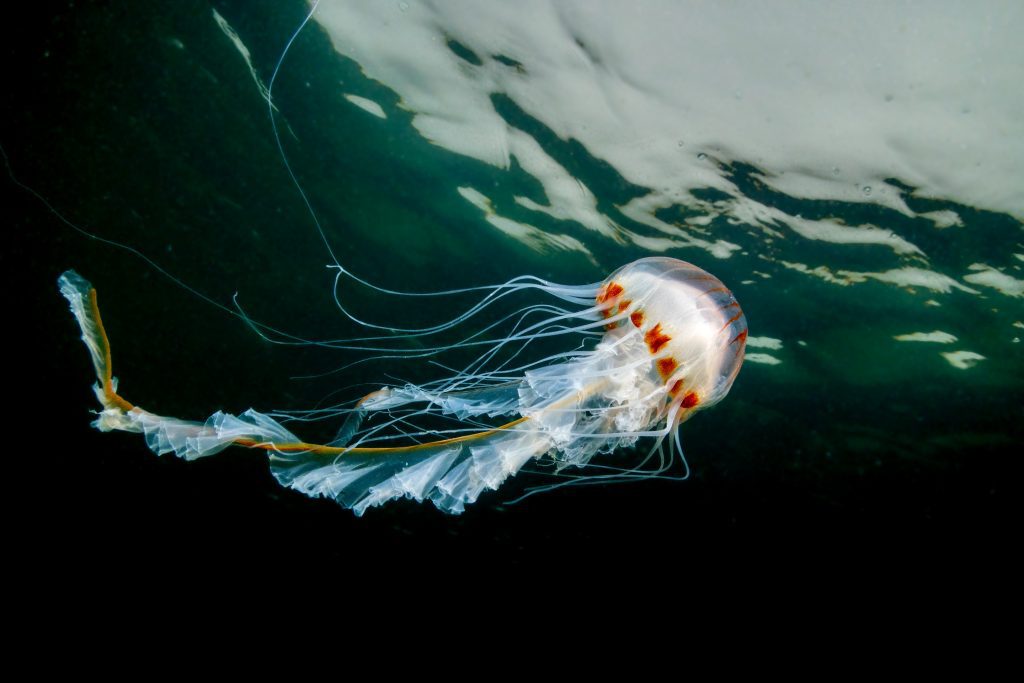
Basking Shark, Isle of Coll by Mark Kirkland (top)
“Through late summer the basking shark passes through the Isles of Coll and Tiree in huge numbers on its migratory journey north. Despite being the second largest fish in the sea (up to nine meters long) and a close relative to the great white shark, it’s completely harmless, with a preference for microscopic plankton as it’s food. This split shot was taken on a glorious evening’s snorkel with three large individuals.”
Anglerfish, Lophius Piscatorius, Chesil Cove, Dorset by Jon Bunker
“Among the most beautiful of our ground-dwelling fishes, the angler fish’s mottled brown tones and leafy protrusions of skin make it almost indistinguishable from the rocky, weed strewn ground that divers often encounter them in. Broad circular pectoral fins seem to grip the seabed like clasping hands on either side of the massive, dustbin-lid head. Ahead of a decreasing series of weed-like dorsal spines, the anglerfish wafts its distinctive lure or ‘illicium’ to entice unwary prey into its cavernous mouth.”
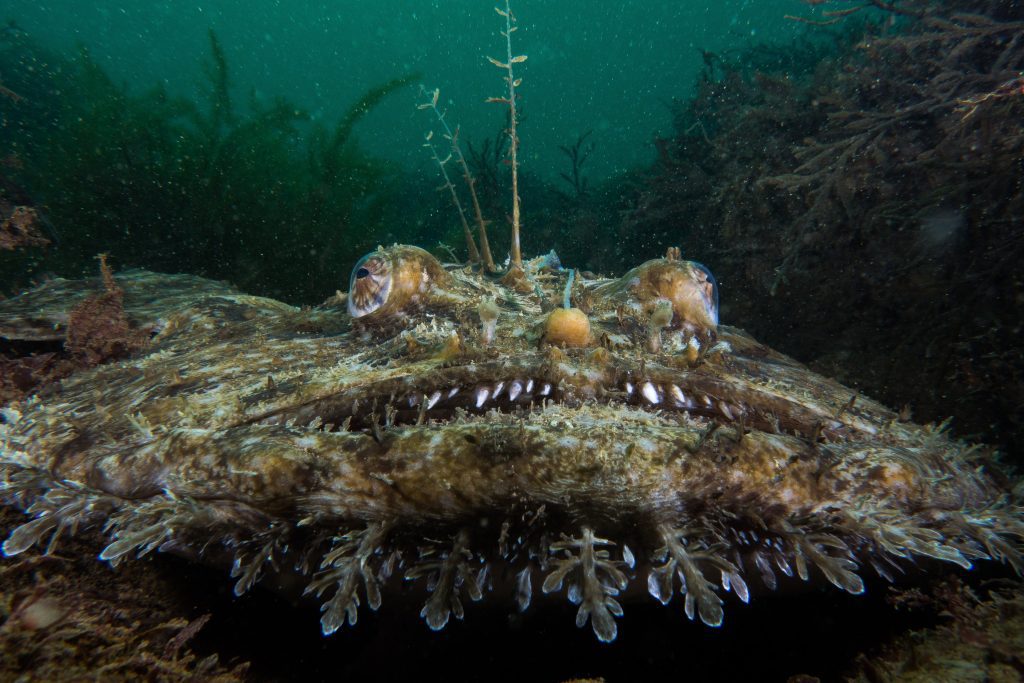
Edible crab, Ar. Abbs, Berwickshire marine reserve by Georgie Bull
“Over the summer I visited St. Abbs and was blown away by how many crabs and lobsters there were. The Berwickshire Marine Reserve is a very special place to dive because it is a voluntary no-take zone. Many of the marine animals here have no need to fear divers and exist in higher numbers than outside of the reserve.”
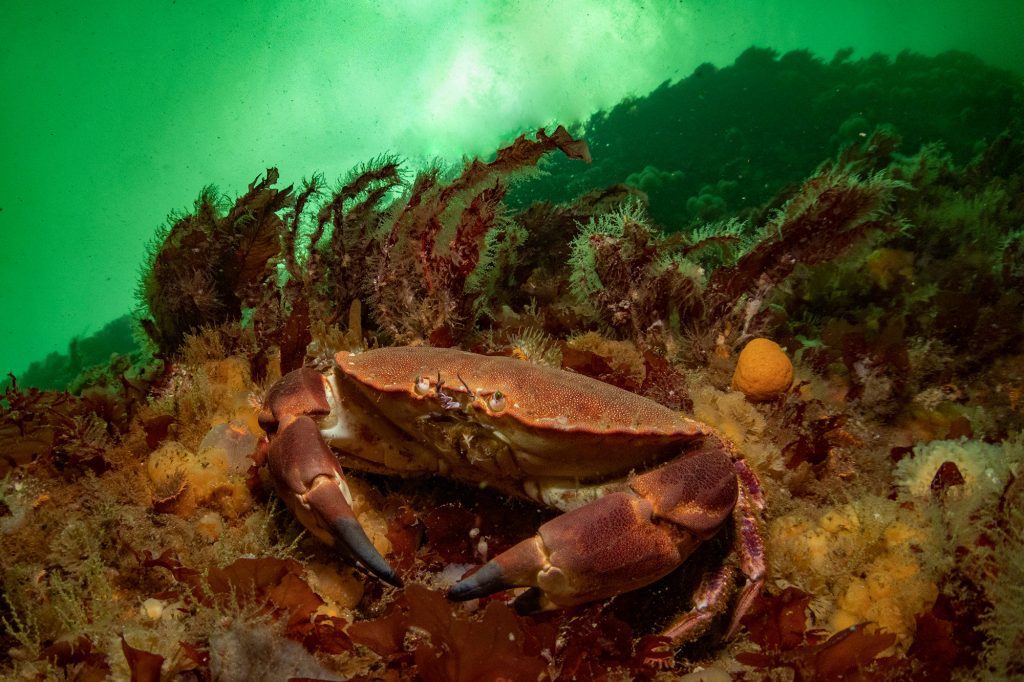
Pair of wolf fish, Berwickshire marine reserve by Kirsty Andrews
“The Berwickshire marine reserve on the Scottish borders is the most reliable spot for UK divers to see charismatic wolf fish in their rocky lairs. They usually live singly but on one September trip, I spotted five separate pairs huddled together in different rocky hollows. Clearly, love is in the air for wolffish in the Autumn.”
Hermit crab and other molluscs on kelp, Shetland by Kirsty Andrews
“The closer you look, the more you see. I was drawn to this tiny but colourful hermit crab on a piece of kelp in the shallows in Shetland, but I didn’t appreciate until I looked closer that its shell was in turn covered in life, such as lampshells, pink encrusting algae and at the very top, a topshell. Quite the vibrant community.”
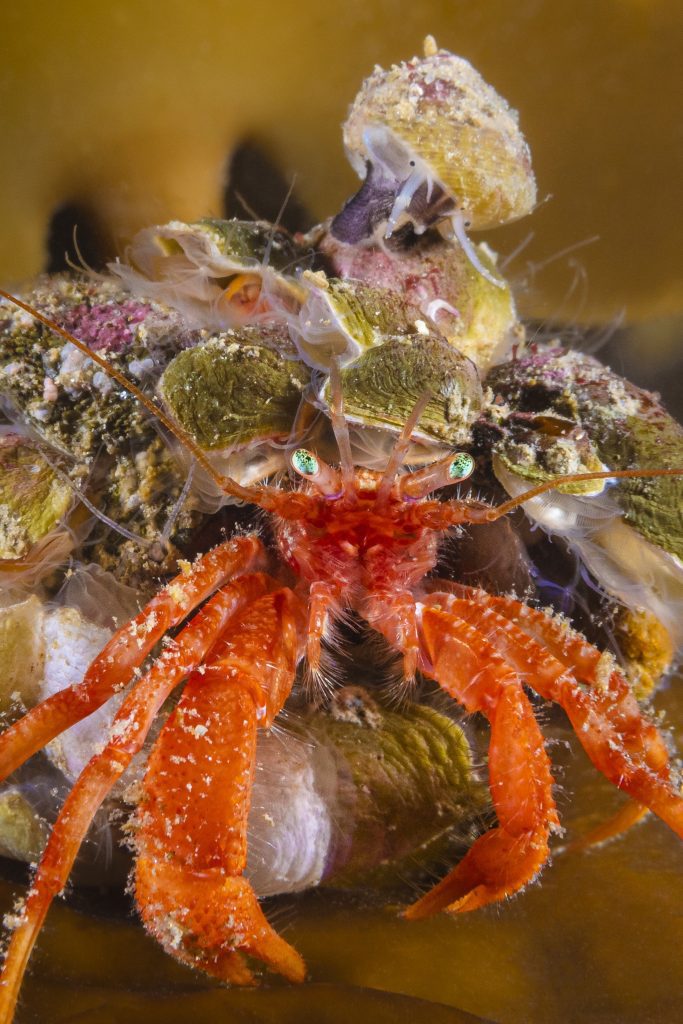
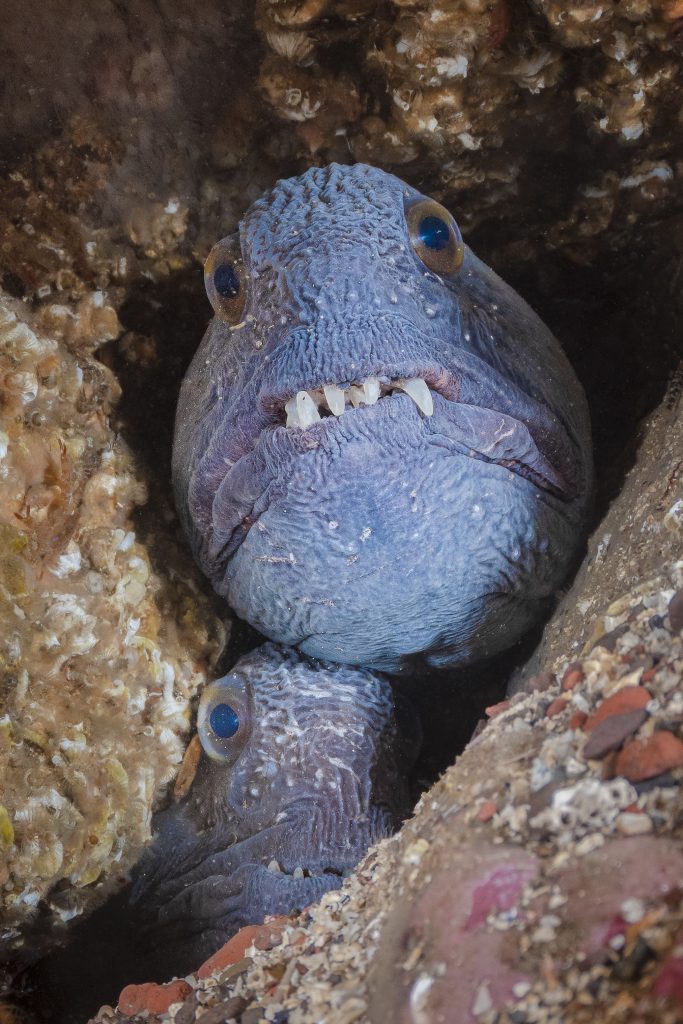
Curled octopus, Toft pier, Shetland Islands by Billy Arthur
“Instantly a great dive when an octopus encounter is involved! Being quite sheltered and having lots of prey available for them, this site is a hotspot for curled octopus. It was already watching me when I finally noticed its presence, which is nearly always the case with these masters of camouflage. The plumose anemones which carpet the seabed in patches make it a very special place.”
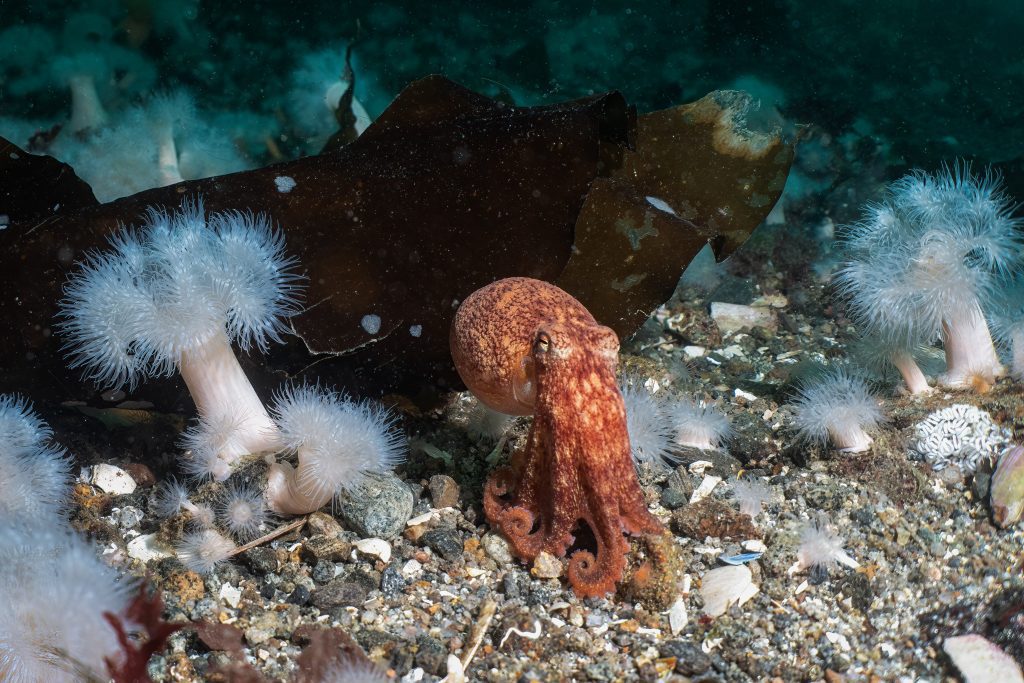
Bobtail Squid, Loch Long by Mark Kirkland
“As winter creeps in, the tiny Bobtail Squid rises from the depths of the sealochs to breed. Through September and October, they can be found in depths as shallow as ten metres. Often no larger than a golf ball, a macro lens is preferable to get the glorious and colourful details. This shot shows an eye and siphon.”
Common Sunstar, Levenwick, Shetland Islands by Billy Arthur
“Typical rocky Shetland reef capped with a beautiful forest of kelp. This large common sunstar seemed to be making its way up into the kelp forest, likely in search of food. A beautiful starfish but also a voracious predator and scavenger. Once their prey has been caught by one of its many arms, they extrude their stomach out of their mouth and partially digest the meal, a gruesome end.”
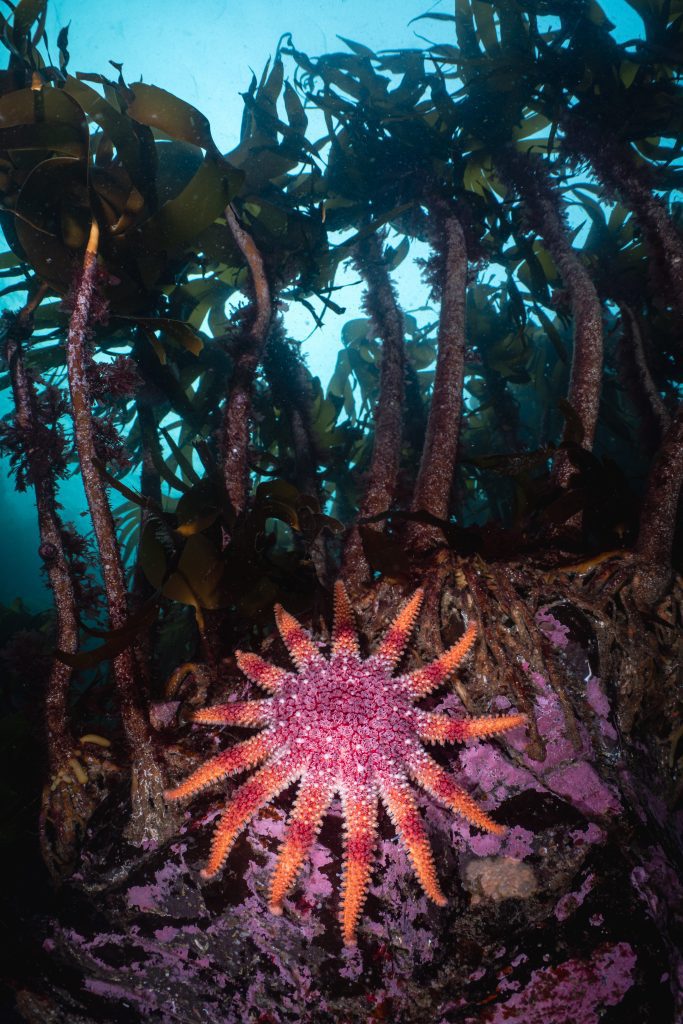
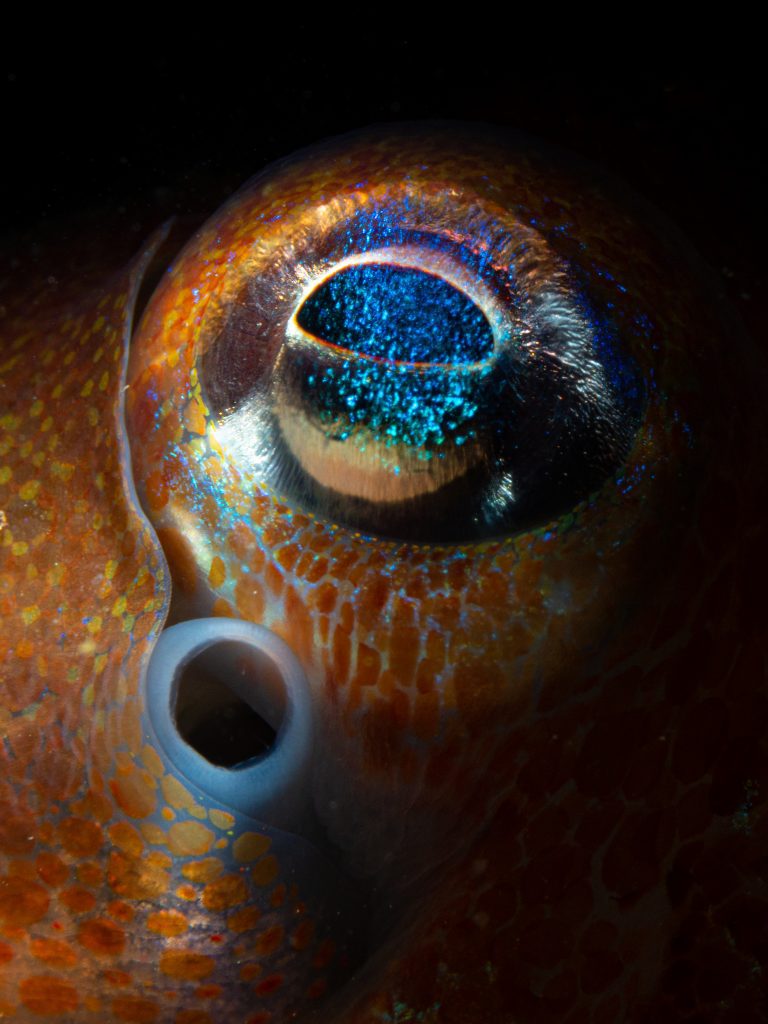
Variable blenny, Babbacombe, south Devon by Dan Bolt
“The variable blenny is a relative newcomer to UK waters, arriving from the Mediterranean as a summer visitor some years ago, but is now firmly established in Babbacombe all year round. As their name suggests they are variable in colour, not only between male and female, but also when either mating or looking after a clutch of delicate eggs for weeks at a time.”
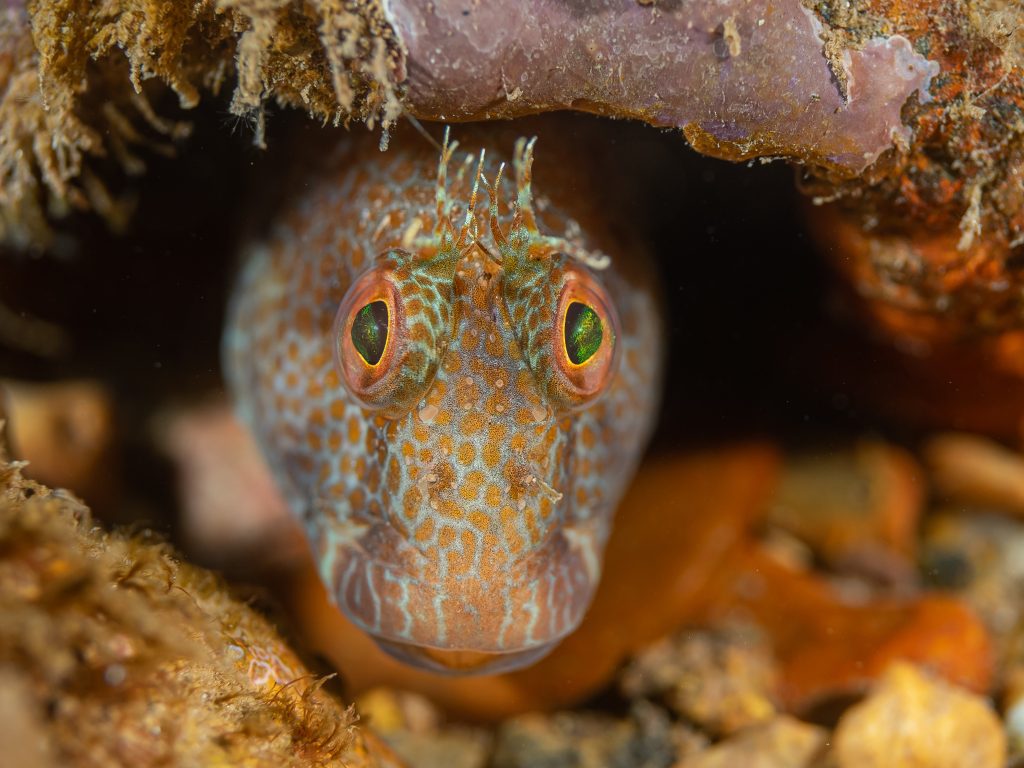
The Marine Conservation Society is the UK’s leading ocean charity, fighting for cleaner, better-protected and healthier seas. The charity works to highlight the importance of our ocean, and the life within it, through working with government, industry and education, to take action to restore and protect the marine environment.
Any divers and snorkelers out there wanting to get involved? Join the Marine Conservation Society’s Seasearch programme, which allows volunteers to conduct underwater surveys and provide an insight into the state of the UK’s seas. Find out more.
Lead photo: Basking Shark, Isle of Coll by Mark Kirkland.






